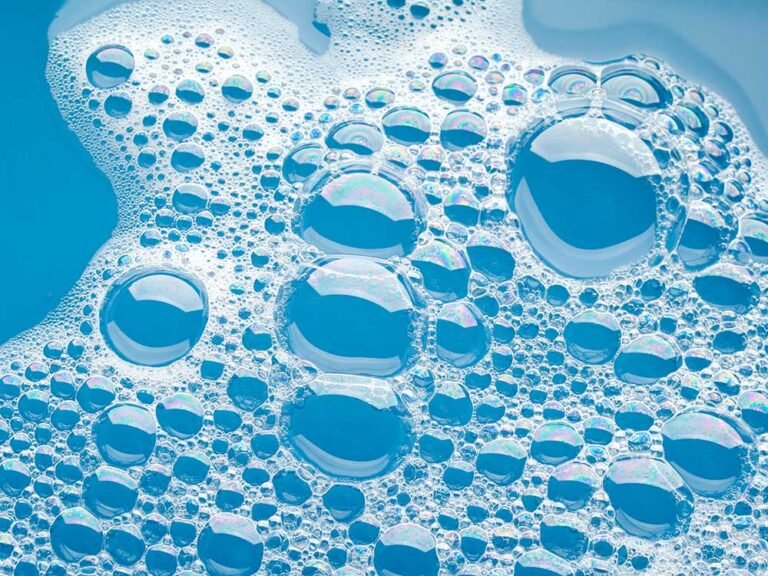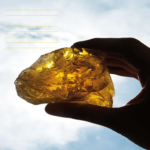HROC promotes wide range of ethoxylates of C12 to C18 Fatty Acids, ethoxylates of C8 to C22 Fatty Alcohols, ethoxylates of alkyl phenol, castor oil ethoxylates and ethoxylate
Ethoxylate is a compound that is produced by the addition of epoxides/ethylene Oxide (EO) in desired molar ratio to substrates like alcohol, acid, amine or vegetable oils in block wise or random manner where Ethylene Oxide (EO) ranges from 1 to any number. The addition of ethylene Oxide to alcohol, acid, amine and vegetable oil can give corresponding alcohol ethoxylate, acid ethoxylate, amine ethoxylate and oil ethoxylate. Such Ethoxylate have a hydrophobic and hydrophilic part making them amphiphilic in nature. This helps them to solubilize oil in water or water in oil depending on the type of ethoxylate used in the process. Thereby ethoxylates are compounds that lower the surface tension between two liquids, between a gas and a liquid, or between a liquid and a solid. This functionality of ethoxylates gives them the term of surface-active agents. Ethoxylation is known as “PEGylation” (polyethylene oxide is synonymous with polyethylene glycol, abbreviated as PEG). Carbon chain length is 8-18 while the ethoxylated chain is usually 3 to 12 ethylene oxides long in-home products.
The ethoxylation process is widely used to make fatty alcohols, fatty acids, fatty amines and natural vegetable oils more soluble in water and produce surfactants which are non-ionic, anionic, cationic or amphoteric surfactants having application in different industrial application and market segment. In aqueous solutions ethoxylated surfactants form a micelle consisting of two parts, a core and a shell. The micellar structural arrangement consist of hydrophobic end groups inside the core and hydrophilic head groups are directed towards the outer shell. For example in case of fatty substrate ethoxylate, the arrangement of the hydrophilic head (ethoxylate) is at the interface of water and the hydrophobic groups (fatty substrate) align toward the oil interface. While the same ethoxylated surfactant in non-aqueous solution can arrange in the exact opposite way.
Therefore, a surfactant made from fatty substrate ethoxylate contains both a water-insoluble (or oil-soluble) component and a water-soluble component. Fatty Ethoxylates will diffuse in water and adsorb at interfaces between air and water or at the interface between oil and water, in the case where water is blended with oil. This property allows ethoxylates to act as detergents, wetting agents, emulsifiers, foaming agents, and dispersants.
Micelles
One of the most important properties of surfactants is their capacity to self-assembly to create nanometer size structures. When the concentration of surfactant molecules exceeds the limit of their solubility, these molecules become organized themselves into nanomeric structures called micelles. Micelles are commonly defined as core-shell surfactant-based systems dispersed in a bulk phase. Surfactants can spontaneously create these nanometric systems in either an aqueous or oily phase. The micelles formed in aqueous solution are called conventional (or normal) while those formed in an oily bulk phase are called reverse (or inverse). In the conventional micelles, the shell is bordered by the hydrophilic region of the surfactant molecules, while the hydrophobic one forms the core. Micelles can be spherical, cylindrical, or organized in multi-layered flat sheets. In addition, the morphology of the micelles can be tuned by varying some parameters, including the size and type of the hydrophobic tail of the surfactant, the nature and size of the polar head, as well as the concentration, temperature, pH, etc.

Critical Micellar Concentration (CMC)
The CMC is defined as the concentration of dissolved surfactant molecules above which aggregates, called micelles, are spontaneously formed (self-assembly). At the CMC, small spherical micelles are typically formed while at larger concentrations, they may grow to worm- or vesicle-like micelles. At concentrations above the CMC, the micelles are in dynamic equilibrium with free molecules but are thermodynamically stable and tend to resist disassembly. In addition, upon reaching the CMC, any further addition of surfactants will just increase the number of micelles. On the contrary, below the CMC, the micelles are dissociated at a rate that depends mainly on the nature of the surfactant and the degree of interaction between the surfactant molecules. For a given system, micellization occurs over a narrow concentration range. Besides concentration, temperature also influences micelle formation, and the temperature corresponding to the initiation of micelle formation is designated as the Krafft point.
Usually, low-molecular weight surfactants exhibit higher CMC values than the high-molecular weight and block copolymer surfactants, which show a greater resistance to dissociation upon dilution. The micelles formed by block copolymer surfactants generally present a core-shell morphology wherein the hydrophobic segments form the core within a size range of 10–100 nm.
APPLICATIONS
Ethoxylates play an important role in personal care products such as cosmetics, shampoos, shower gel, hair conditioners, and toothpastes. The property of providing cleaning, wetting, and dispersing, emulsifying, foaming and anti-foaming effects are used in many practical applications and products. ethoxylates with different HLB are used in detergents, fabric softeners, soaps, paints, adhesives, inks, emulsions, anti-fogs, ski waxes, snowboard wax, deinking of recycled papers, in flotation, washing and enzymatic processes. Agrochemical formulations such as some herbicides, insecticides, biocides (sanitizers) etc. Ethoxylates especially Polyethylene glycols or PEGs are used in drug delivery systems because they are neutral, nontoxic, and water soluble and can form micelles which are biocompatible and biodegradable.
ALKOXYLATES
Alkoxylation process is chemical process where in alkylene Oxides such as ethylene oxide, Propylene Oxide and butylene oxide are added in block wise or randomly to hydrophobes to produce alkoxylates.
Alkoxylates are those chemicals that are produced by addition of ethylene oxide, Propylene Oxide and butylene oxide to fatty hydrophobes via alkoxylation process. We provide various types of fatty alcohol alkoxylates, fatty acid alkoxylates and fatty amine alkoxylates which are used as wetting agents, cleaning agents, emulsifying agents, detergents, and stabilizers etc., these alkoxylates are biodegradable and therefore environment-friendly in nature.
ESTERS
The process of combining an organic acid (RCOOH) with an alcohol (ROH) to form an ester (RCOOR) and water is called esterification. This chemical reaction results in the formation of at least one ester product with formation of water as the by-product is termed esterification process.
Esters are formed by the reaction of an alcohol and an acid under basic or acid conditions. Esters have a wide range of applications in every industry segment. HROC offers a comprehensive list of esters as per required specifications. Some examples are glycol esters with fatty acids, glycerol esters (GMO, GMS, GTS, GML, GTO) sorbitan esters (SMO, SMS, SML, STO, STS) and polyglycerates( eg; polyethylene glycerol mono oleate).
PEG BASED ESTERS
PEG Esters are formed by the reaction of polyoxyethylene glycol (X-moles) with a fatty acid. Such Esters are generally water soluble and behave as emulsifiers. They do not hydrolyse in water and prevent mould growth, therefore preferred in products containing water (eg. Cosmetic creams etc.) some of their applications: PEG Esters are widely used in the formulation of emulsifier blends, thickeners, resin plasticizers, emollients, pacifiers, spreading agents, wetting and dispersing agents and viscosity builders. They also have applications in metal working, pulp, paper, textiles and defoamers for latex paints.
GLYCEROL MONO OLEATE (GMO)
Mono oleoyl glycerol, also known as glyceryl 1-oleate, glyceryl mono oleate or 1-monoolein, is classified as a member of the 1-monoacyl glycerols. 1-Monoacyl glycerols are monoacylglycerols containing a glycerol acylated at the 1-position. Glycerol monooleate is considered to be practically insoluble (in water) and relatively neutral. Glycerol monooleate is a yellow to amber liquid at room temperature, biodegradable and can be used as a water-in-oil emulsifier, pigment dispersant, lubricant, and spreading agent.
GLYCEROL TRI OLEATE (GTO)
Synonym: (9Z)9-Octadecenoic acid 1,2,3-propanetriyl ester, 1,2,3-Tri(cis-9-octadecenoyl)
SORBITANMONOOLEATE(SMO)
Sorbitanmonooleate is a food additive with the E number E494. It is generally manufactured by sorbitan (a derivative of sorbitol) esterified with fatty acids and exist as oily liquids.
SULFATES & SULFOUCCINATES
Sulfated fatty alcohols are produced by the process of ethoxylation and sulfonation on fatty alcohols. Fatty alcohols are derived from natural sources like palm kernel oil, coconut oil, rapeseed oil, castor oil etc.
Sulfated fatty alcohols have excellent emulsifying, wetting, lime soap dispersing and foaming properties. They also have high electrolyte tolerance. Alkyl ether sulphated (ethoxylates) also show improved water solubility and resistance to hardness. These products are widely used in emulsion polymerization, cosmetic formulations, detergents and textile industry.
Sulfosuccinic mono– and di-esters are used as emulsifiers in polymerization processes. They are highly effective wetting agents and are used in various industry segments. HROC can offer a wide range of sulfosuccinate esters based on different alkyl groups and can customize the properties as per requirement. Sulfosuccinate products are available in solution with different solvents such as linear alcohols or PEGs/ PPGs.
PHOSPHATE ESTERS
Phosphate esters are anionic surfactants which are produced by phosphation of fatty alcohols and ethoxylated aliphatic and aromatic alcohols. Compared to other anionic surfactants, phosphate esters offer specific advantages, including stability over a broad pH range, good solubility and corrosion inhibiting properties. Phosphate esters are highly suitable for use as emulsifying agents, wetting agents, anti-stats, corrosion inhibitors and hydro tropes in cleaning formulations.
Gemini Surfactants
Gemini surfactants are dimeric structures, composed of two hydrophobic chains and two hydrophilic heads, linked by a spacer at or near the head groups. They present lower CMC, better efficiency to form micelles, and solubilization capacity compared to their conventional (monomeric) counterparts. They can also reduce the surface tension of water and the oil–water interfacial tension from 10 to 100 times. This behaviour depends mainly on the nature of their components (heads, hydrophobic chains and spacer); thus, their synthesis is focused mainly on varying the type and length of these components.

Gemini surfactants have attracted interest among the chemical community in various applications due to their very low CMC, greater solubilization power, as well as better wetting and foaming properties compared to single-chain surfactants. Gemini surfactants have a polymorphic phase behaviour and a great variety of self-assembled structures forming aggregates that can be observed as micelles, bilayers, and vesicles, depending on the head groups, the size of the hydrophobic tails, and the nature of the spacer. Below figure shows the structure of normal micelles obtained from conventional and Gemini surfactants.

Representation of micelles formed from
(a) Conventional surfactants and
(b) Gemini surfactants






